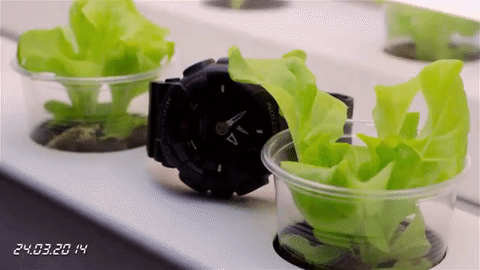Writers often make the best scientists.
That’s a bold statement, but it may not be as far off base as you’d think. They're excellent at posing hypotheses, which is a major part of the scientific method. We’ve already discussed that in our piece on how sci-fi has become science fact. In that piece we talked about the ways temperature monitoring has helped companies develop devices that farm moisture out of the air. It could potentially make access to fresh water a reality around the globe. This is an idea that was explored by George Lucas in Star Wars: A New Hope.
Another book, The Martian by Andy Weir, explored farming on the surface of Mars. That seems like a pretty far out idea considering all the things required for successful farming. Plants require nutrients in addition to sunlight and water to grow. Often, these nutrients are entered into ground soil through the decay of plants. On a planet where there are no organisms, finding nutrient rich soil would seem nearly impossible, but the main character in Weir’s novel was able to make the process work using some ingenuity to develop fertilizer and to create moisture in the barren environment. Those ideas weren’t as far off as one might think. In fact, scientists from the University of Arizona have already figured out how to grow crops on the frozen planet.
The CEAC, or Controlled Environment Agriculture Center, is part of the university’s College of Agriculture and Life Sciences. At the campus, a team of researchers have spent seven years working on a functional prototype lunar and Martian greenhouse. The project has seen collaboration from 20 researchers with varying backgrounds in an attempt to grow crops in conditions similar to other non-Earth environments. The university’s website goes into detail on how this is accomplished.
“The lunar and Martian greenhouse at the UA relies on a complex hydroponics system to provide fresh water that, when combined with nutrients, supports the plants. Hydroponics, or the recirculation of plant fertilizer and water to grow plants in the absence of soil, is the driving force behind the greenhouse. The hydroponics system and controlled-environment greenhouse provide yields 10 times of those in an open field, so the notion of feeding a crew of astronauts for hundreds of sols — Martian days, spanning 24 hours and 39 minutes — isn't just sci-fi.”

Because farming is such a delicate process, a very specific set of environmental conditions must be closely monitored and maintained. Temperature, humidity, air circulation and lighting are all important to the final product. Erica Hernandez, a senior in plant sciences at UA, discussed how the conditions were handled.
“We have a wide array of sensors that monitor all of the environmental conditions in (the greenhouse). We have a controller that we can program and make changes to the day-to-day routine that the plants experience, and just being able to collect all of that data and really understand the behavior of the system through that data is very interesting for me.”
Being able to grow food for a crew of astronauts on a mission of exploration is a fine cause, but we live on a planet where nearly 800 million people go hungry every day. According to the World Food Programme, poor nutrition is the cause of nearly half of all deaths in children under five years old. While writers may make for great scientists, they aren’t great at making proven hypotheses ready for real world use. Luckily, there are others out there who are bold enough to do just that.
Click here for part two of our two part series on farming going where it’s never gone before.
